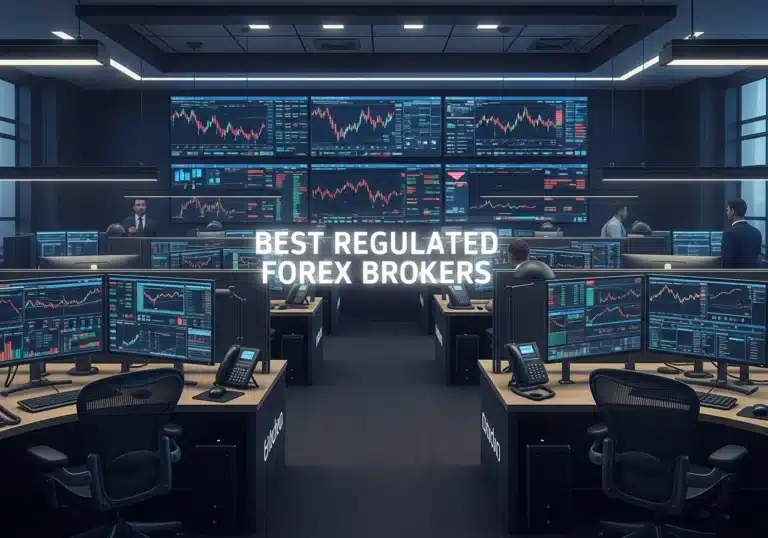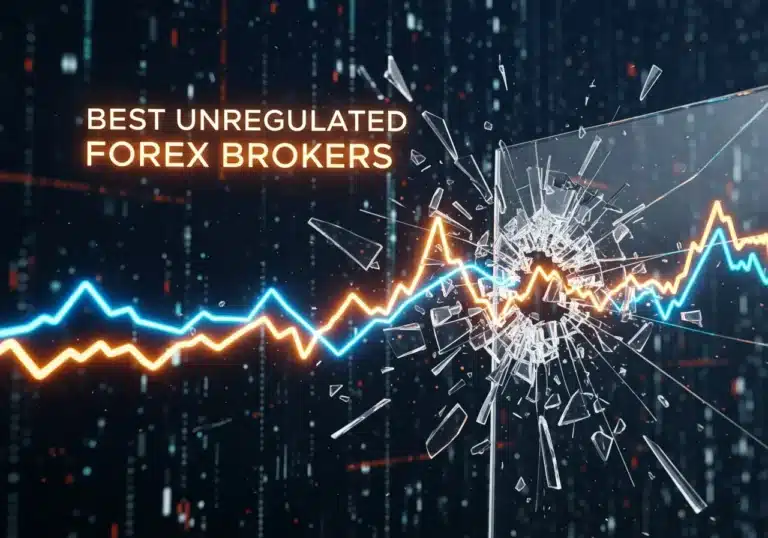The volatile world of financial markets is filled with terms that generally refer to a group of traders with distinct characteristics. Traders fall into these categories throughout their careers, based on their personal temperament and experience. Whether you are a seasoned professional trader or a novice trader, you have probably heard two of the most common terms in the world of financial markets: dumb money and smart money.

Simply put, the term dumb money refers to those traders who fail to control their emotions during trading, such that when the market dumps, they panic and sell their assets with a loss, and when the price of an asset increases, they feel that they are lagging behind other traders and quickly buy at the price ceiling. On the other hand, the term smart money refers to those traders who never get caught up in emotions such as greed and try to follow their trading path according to their strategy by maintaining their composure.
To make more profit, these traders try to buy at price lows when everyone in the market is selling and sell at price highs when everyone is just getting excited about buying that asset emotionally. This post delves deeply into who these dumb and smart money groups are, how they behave, tools to track their activity, and how retail investors can learn from smart money’s playbook.
Understanding “Dumb Money and Smart Money”
Smart money refers to capital invested by experienced investors, such as institutional investors and hedge funds, who are believed to have a better understanding of the market and influence over financial trends. Conversely, Dumb money is a tongue-in-cheek term for retail investors acting on emotion, fake trends, or incomplete knowledge through the market, often attempting to buy at market tops and sell near bottoms.

Of course, there are always tools that help traders and, as a roadmap, guide them to identify which direction institutional investors or market makers are leaning in at crucial moments in the market. Two of these widely used and popular tools among traders are the Smart Money Index (SMI) and the Smart Money Flow Index (SMFI), which set the direction for traders and help them make decisions and choose the right time to enter a trade.
Behavioral Traits: How They Trade
Financial markets, especially Forex and Crypto, are among those marketplaces that host millions of traders from all over the world with unique characteristics and features. Although trading in financial markets is not a very cold and soulless environment (because it deals directly with human emotions), sometimes traders try to avoid stereotypes by showing creativity and innovative techniques.
However, if you have just entered this world full of information, it is better to know that creativity and innovative actions are like walking on a razor’s edge and may be accompanied by irreparable losses. Therefore, in order to become more familiar with the characteristics of smart money and dumb money and how each of these groups trades, we will examine the behavioral traits of these two groups:
Smart money characteristics:
- They generally analyze the market with a long-term view and make their trades based on comprehensive and in-depth research and macro market signals, not on hype from profit-seeking individuals on social media or blindly following other traders.
- They use structured, multi-frame strategies and advanced indicators such as supply-demand zones. They are aware of fair value gaps that occur in the market and try to follow political and geopolitical developments for comprehensive fundamental analysis.
- They are not in a hurry to take a trade and try to enter the trade at the best and most appropriate time of the market, like a hunter, and stop trading after reaching the daily target. They often buy during price drops, when the markets are oversold, and sell during price increases.
Dumb money characteristics:
- Emotional reactions, especially during the extreme volatility – often due to fear of missing out (FOMO), they make emotional buying without considering risk management when the market is trending up, or panic-sell at the bottom when the market is trending down, without considering the fact that they could hunt for valuable prices to buy.
- With the advancement of technology, financial markets are becoming more complex every day and require comprehensive analysis and deeper learning. Without analysis or simply relying on learning a few principles of a strategy, or by following fleeting fads or social media trends, survival in the financial markets cannot be guaranteed.
- They often hesitate and make mistakes in identifying the right time to enter a trade and often trade based on incomplete information. Sometimes they do not adhere to their loss limits or engage in overtrading.
Read More: Trading Psychology in Forex: Mastering Emotions for Success
Performance: Who Comes Out on Top?
Smart money tends to outperform dumb money over the long term, thanks to the use of smart and practical tools and the exercise of superior discipline. However, since one can never be certain in financial markets, this outperformance has not always been consistent, and there have been rare anomalies. For example, the Wall Street Bets meme-driven stock fever in early 2021 allowed retail investors to outperform institutional players.
More recently, the massive buying by retail investors and their preference for safe and risk-averse assets, especially during the 2025 dips, signaled a potential market peak, while institutional investors retreated. These divergent trends illustrate how dumb money and smart money can move in opposite directions.
Tracking the Flow: Key Indicators
Undoubtedly, if you want to be among the smart money traders in the financial markets, you must continuously track the current flows of the market and even monitor the microwaves of the market. Below, we will examine some of the most important key indicators in this direction:
Smart Money Index (SMI) & Smart Money Flow Index (SMFI)
- As previously mentioned, smart money tends to buy near the close of the market, while dumb money tends to buy because of the excitement of the market opening. Two important tools track these two important issues: buying near the close of the market (smart money) versus buying near the open of the market (dumb money).
- Notably, for traders trading in the stock market is that as of October 12, 2022, the SMFI correlation with the Dow Jones Industrial Average was an impressive 0.93. So this indicator can be a great help in safe trading in the stock market, especially the Dow Jones Industrial Average.
- Jim Paulson, a financial market expert and activist from MarketWatch, says that the current divergence of the SMFI from stock performance could indicate a potential buying opportunity. This comment in itself can emphasize the importance of this indicator.
Retail Sentiment & Positioning
- Probably it has happened to you, as a retail trader, that you are looking for an opportunity to trade, you have spent many minutes and sometimes hours trying to find the market sentiment and price movement trend (whether with a trend trading approach or a countertrend approach), and after entering, the trend immediately reverses, and you lose. According to the statistics, 90% of retailers often enter a trade before the market trend is reversed by Smart Money, which is a significant statistic.
- According to research by the reputable JPMorgan Institute, the number and volume of retail transactions usually perform about 5% weaker during the following quarter. This statistic increases to 15% and more after three quarters, which is considered a weak statistic for a retail trader.
The importance of Dumb Money and Smart Money distinction; Contextual Significance
A comprehensive survey of market sentiment in the summer of 2025 shows a significant divergence between retail enthusiasm and institutional skepticism, which could signal a near-term peak. In this section, we explore the importance of distinguishing between smart money and dumb money:
- Although fundamentals can influence market trends, they are not the only driving force; markets move based on which market maker is driving the momentum.
- Dumb money’s euphoria can be caused by a market peak (because dumb money considers the market’s price rise as its own progress), while this peak is a sign of fundamental strength and indicates that smart money has been quietly buying.
- Each of these movements, driven by smart money and dumb money, provides opposing signals that can lead to better risk management and strategy.
Read More: Risk management principles for both novice and advanced traders
Emulating Smart Money (Without Being Dumb Money)

You’ve probably heard the famous saying that to succeed in the financial markets, all you need to do is follow in the footsteps of successful traders. Here are some key types of smart money emulating behaviors:
- Follow Smart Money Tools: Monitor SMFI/SMI and positioning metrics—not for crystal-ball timing, but to verify your thesis.
- Do Deep Research: Evaluate fundamental financial statements, competitive positioning, and grasp macroeconomic trends: bond yields, inflation, and central bank moves.
- Think Contrarian: When smart money accumulates during general market pessimism, it may be a signal to buy.
- Use Structured Trading Techniques: Learn the highest level of strategies available in the market, institutional-level strategies like liquidity grabs or fair-value gaps.
- Risk Management: Limit position size, set stop losses, avoid emotional trading—traits smart money excels at but often dumb money lacks.
Read More: Smart Money Trap
Pitfalls of Dumb Money Behavior
Many of the dumb money pitfalls may stem from a bad habit or a misguided learning of a financial strategy or behavior. A few of these mistakes include:
- FOMO & Trend Chasing: Buying high in fear of missing out—buying peaks and selling troughs.
- Panic Selling: Selling during dips exacerbates losses.
- Overconcentration: Overexposure to one sector or trend increases risk.
- Over-leveraging: stemming from the lack of proper risk management. Borrowing to buy high amplifies losses when markets reverse.
Conclusion
Understanding the difference between dumb money and smart money is an essential principle for all traders. This understanding includes behavioral and psychological differences in trading, using smart money indicators like SMFI, and adopting and adhering to a disciplined and rigorous strategy that can help retail traders become more aligned with smart money.
In short, be aware, identify, and work to eliminate the wrong behaviors of dumb money. Study smart money behaviors to find your own trading strategies. Minimize losses, maximize profits, and gradually fill the gap between dumb and smart money for better long-term outcomes.
How does the concept of “dumb money and smart money” apply in cryptocurrency markets?
In crypto, “smart money” is especially powerful because the market is still growing and changing quickly, as it often refers to whales, institutional funds, and sophisticated traders who execute large orders, hedge positions, and perform on-chain analysis. Dumb money is characterized by retail traders buying on hype or FOMO, often near tops, and exiting in panic.
Can retail investors consistently outperform smart money?
While rare, retail investors can outperform by emulating smart money and following disciplined strategies, setting clear rules, avoiding emotional trading, and using smart-money indicators and macro insights.
Does market psychology play a role in dumb money and smart money trends?
Absolutely. The key to success in the financial market is controlling emotions and paying attention to the principles of psychology. Retail emotions among Dumb Money shift from greed to fear, leading to FOMO or panic selling, while Smart Money effectively exploits crowd psychology and behavioral biases.







